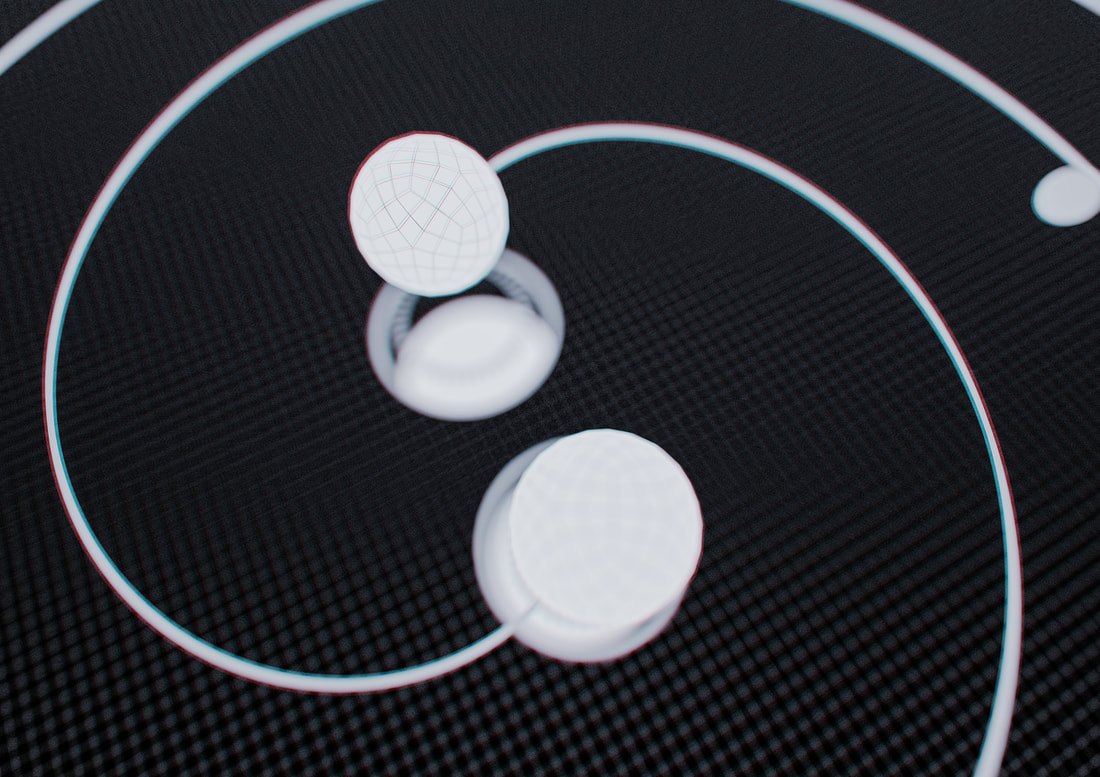 Illustration of binary neutron stars - Carl Knox, OzGrav-Swinburne University Illustration of binary neutron stars - Carl Knox, OzGrav-Swinburne University Binary neutron stars have been detected in the Milky Way as millisecond pulsars and twice outside the galaxy via gravitational-wave emission. Most of them have orbital periods of less than a day—a contrasting difference to their progenitors: massive stellar binaries that have hundreds or thousands of days orbital periods. In the last several decades, there has been much debate about explaining how massive binaries transition to double compact objects. To date, one of the strong contenders to explain this transition is the highly-complex stage of binary stellar evolution known as the common-envelope phase. The common-envelope phase is a particular outcome of a mass transfer episode. It begins with the Roche-lobe overflow of (at least) one of the stars, and it’s prompted by a dynamical instability. In a simple version, the stellar envelope of the mass-transferring star—the donor—bloats and engulfs the whole binary, creating a new system comprised of an inner compact binary, and a shared “common” envelope. The interaction of the inner binary with the common envelope results in drag, and the dissipated gravitational energy is transferred onto the common envelope, which can lead to its ejection. A successful ejection suggests that a compact binary can form. But what does a “successful ejection” mean? To explore the common-envelope phase with three-dimensional hydrodynamical models, we attempted to address the likely outcomes of common-envelope evolution by considering the response of a one-dimensional stellar model to envelope removal. In a recent study, we focussed on the common-envelope phase scenario of a donor star with a neutron star companion. We emulated the common-envelope phase by removing the envelope of the donor star, either partially or completely. After the star was stripped, we followed its radial evolution. The most extreme scenarios resulted as expected: If you remove all the envelope, the stripped star remains compact. Alternatively, if you leave most of the envelope, the stripped star subsequently expands a lot. The question is: what happens in between the extreme cases? Our research shows that when most of the envelope, but not all of it, is removed, the star experiences a short phase of marginal contraction (<100 years), but overall, the star remains compact during the next 1000 years. This suggests that a star doesn’t needs to be stripped all the way to the core to avoid an imminent stellar merger. Moreover, the amount of energy needed to partially strip the envelope is less than the one needed to fully remove it. Finally, it’s reassuring that our results show a strong correlation to variations in donor mass and composition. This research is a step forward in the understanding of the common envelope phase and the formation of double neutron star binaries. Our results imply that a star can be stripped without experiencing Roche lobe overflow immediately after the common envelope, a likely condition for a successful envelope ejection. It also suggests that stripped stars retain a few solar masses of peculiar, hydrogen-poor material in their surface. While this amount of hydrogen is not excessive, it might be observable in the spectra of a star and can play a role at the end of its life when it explodes into a supernova. While the full understanding of the common-envelope phase remains elusive, we are connecting the dots of the evolution and fate of systems that have experienced a common-envelope event. Written by OzGrav research Alejandro Vigna-Gómez from the Niels Bohr Institute (University of Copenhagen)
0 Comments
Leave a Reply. |
|
- Home
- About
-
Our People
- Chief Investigators
- Partner Investigators
- Associate Investigators
- Postdocs and Students >
- Professional & Outreach staff
- Governance Advisory Committee
- Scientific Advisory Committee
- Executive Committee
- Equity & Diversity Committee
- Early Career Researcher Committee
- Professional Development Committee
- Research Translation Committee
- OzGrav Alumni
- Research Themes
- Education and Outreach
- Events
- News/Media
- Contact Us
- Home
- About
-
Our People
- Chief Investigators
- Partner Investigators
- Associate Investigators
- Postdocs and Students >
- Professional & Outreach staff
- Governance Advisory Committee
- Scientific Advisory Committee
- Executive Committee
- Equity & Diversity Committee
- Early Career Researcher Committee
- Professional Development Committee
- Research Translation Committee
- OzGrav Alumni
- Research Themes
- Education and Outreach
- Events
- News/Media
- Contact Us

 RSS Feed
RSS Feed








